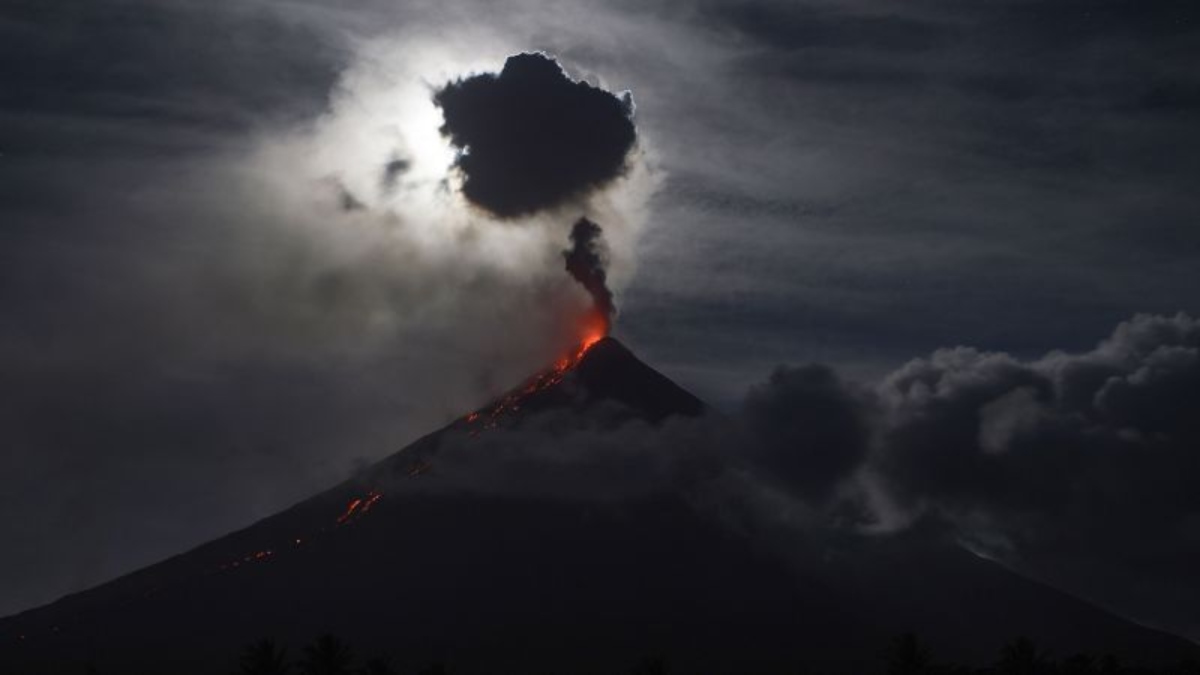(CNN) — Intermittent observations of the Moon help researchers study mysterious volcanic eruptions on Earth.
Saints and other writers of the time gave detailed descriptions of lunar eclipses when the Moon was completely in the Earth’s shadow. At the time, those events were considered portents of disaster.
His writings often referred to a reddish orb orbiting an eclipsing moon, and the unusual occurrence of an eclipsing moon completely disappearing from the sky.
“As if during an eclipse, the location of the moon’s disk is unknown… It is indeed something to be feared,” Japanese poet Fujiwara no Teika wrote of a dark lunar eclipse. An unprecedented date was observed on 2nd December 1229.
What historians didn’t know at the time: The exceptionally dark eclipses were associated with high levels of volcanic dust in the atmosphere, says Sébastien Gillet, a senior research associate at the Institute for Environmental Sciences. University of Geneva.
Gillett believes the medieval manuscripts contain an important source of information about Earth’s large but poorly understood volcanic eruptions.
“Improving our knowledge of these mysterious eruptions is critical to understanding how volcanic activity in the past affected not only climate, but also society in the Middle Ages,” Gillett said in a press release.
Over a five-year period, Gillett and his colleagues searched for descriptions of the moon in 12th- and 13th-century sources from Europe, the Middle East, and East Asia. A more accurate account of what scientists believe are the largest volcanic eruptions the world has ever seen.
Volcanic dust
Of the 64 total lunar eclipses that occurred in Europe between 1100 and 1300, the study found, Published April 5 in the journal Nature, found documents in 51 In six of these cases, the moon was exceptionally dark, the papers said. It was in May 1110, January 1172, December 1229, May 1258, November 1258 and November 1276.
These dates correspond to five major volcanic eruptions identified from traces of volcanic ash found in the polar ice caps: 1108, 1171, 1230, 1257, and 1276. (Of these, only the location of the 1257 eruption is known. , a volcano on the Indonesian island of Lombok in Samala.)
“These eruptions are more powerful than some known volcanic eruptions in recent history,” Gillett said. “One of these powerful eruptions, the 1257 Chamalus eruption, was one of the largest volcanic eruptions of the last millennium.”
“The resulting volcanic aerosols blocked sunlight and caused widespread climate disruption. Historical records show that the following summer in Europe…was one of the coldest on record in the past millennium.”
Researchers believe that volcanic eruptions occurred three to 20 months before dark eclipses, based on recent observations of eruptions and their effect on lunar eclipses.
“We only know these eruptions because they left traces in the ice of Antarctica and Greenland,” Clive Oppenheimer, a professor at the University of Cambridge, said in a news release.
“By combining information from ice cores and interpretations from medieval texts, we can now better estimate when and where the biggest eruptions of this period occurred.”
The Little Ice Age
Climatologists often identify past volcanic eruptions by measuring the amount and acidity of volcanic ash in cores taken from polar ice or by inferring sudden temperature changes from tree ring records.
However, these sources are sometimes conflicting because volcanic eruptions change weather patterns in different ways depending on their location, intensity and timing, said Andrea Siem, head of forest development and dendrology at the Institute of Forest Sciences at the University of Freiburg in Germany. and Eduardo Zorita, a senior scientist at Helmholtz-Zentrum Hieren, a German research center, in a commentary accompanying the study.
“The strength of Gillett and his colleagues’ study lies in the precision with which the authors estimated the timing of volcanic eruptions, specifying the year and in some cases the month of the event,” the colleagues noted. Seim and Zorita did not participate in the investigation.
The study argues that the new research could help shed light on the cold weather between 1280 and 1340 that disrupted harvests, the advance of European glaciers and, according to some historians, the start of the Little Ice Age. It led to a change in the social and economic order.





:format(jpeg):focal(1865x736:1875x726)/cloudfront-us-east-1.images.arcpublishing.com/gfrmedia/YC5DMUA3KRDUBAQ23GJTCQUBSQ.jpg)